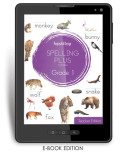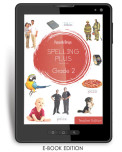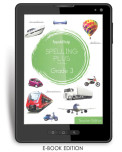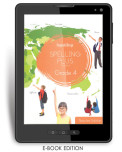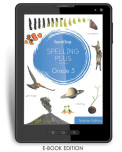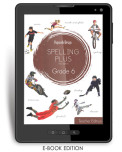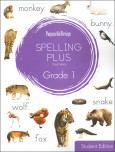We use cookies to make your experience better. To comply with the new e-Privacy directive, we need to ask for your consent to set the cookies. Learn more.
The 3rd Edition (2019) of the excellent Purposeful Design Spelling Plus program, sporting updated graphics and appearance, is still filled with challenging vocabulary, interesting exercises, and engaging themes. The colorful spelling series from a Christian publisher focuses on carefully selected, high-frequency, high-interest words. Over the course of the series, spelling is approached from three different angles: phonetically, visually, and semantically. The lower grades concentrate on phonetic principles, covering and reviewing them thoroughly. Since recognition of visual patterns is also important in accurate spelling, students should begin to discover spelling errors when words don't "look" right, according to normal visual patterns. There is increased emphasis on this in the middle grades. The upper grades emphasize understanding semantic relationships, with attention given to affixes and roots. Some proofing and editing exercises also appear in the last book of the series.
There are 36 chapters, with four pages per lesson (and additional blackline masters, available in the Teacher Edition), estimated to take about 75 minutes per week. The number of words per lesson begins with 10 in Grade 1 and progresses to 23 by Grade 6. Lessons follow a weekly pattern: Day 1, pretests; Day 2, phonics review; Day 3, word study; Day 4, writing extensions, and Day 5, a posttest. Every sixth chapter reviews the words from the previous five. Grades 1 and 2 use regular manuscript printing, grade 3 and up show the wordlists in cursive on the second and fourth days.
Student Editions are colorful worktexts. Both Student and Teacher books have handwriting models, a pronunciation key, and spelling dictionary in the back. A series of pages also provides lines for writing words grouped according to initial letter which can become the student's personal spelling dictionary for the year. Teacher Editions are useful, containing an explanation of the program's philosophy and implementation, reduced student pages (with answers), differentiated instruction, suggestions for enrichment and extension activities, and online access to the downloadable blackline masters and digital color masters. The student worktexts have minimal religious content (short prayer on back cover and occasional Scripture references). The Teacher Editions provide unit devotions and extension activities with religious themes. Student books are softcover and 181 pages while Teacher Editions are hardcover, spiral bound, and 191 pages. ~ Janice
